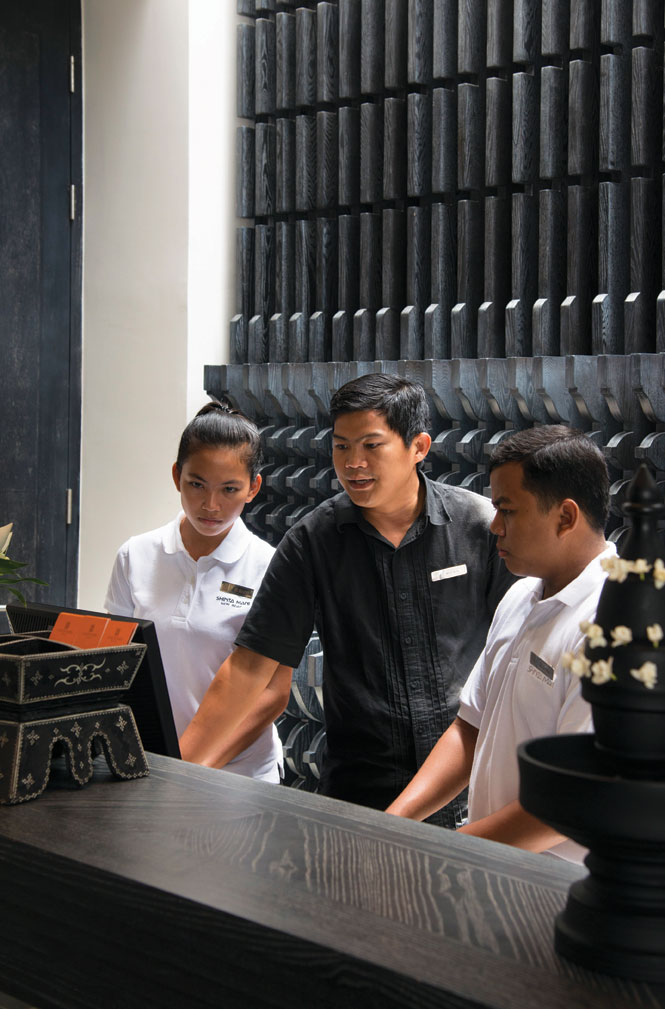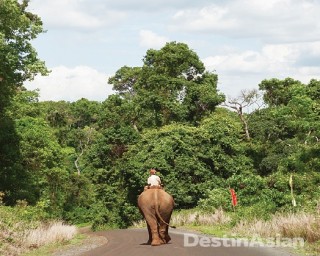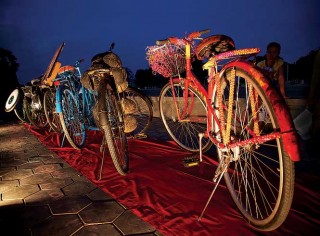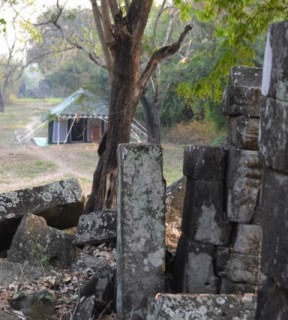The Shinta Mani hotel’s charitable mission has taken on a new dimension with the launch of a namesake foundation dedicated to improving the lives of Cambodia’s rural poor
Photographs by John McDermott
”Who here has a June birthday like me?” I ask the 80 or so high-spirited students, ages six to twelve, gathered around me in school uniforms and party hats under a rainbow of balloons. Not a single hand goes up. Hardly a mathematician, even I understand that the odds on no June babies in Sabour, a farming hamlet 45 minutes by mostly dirt road from Siem Reap and Angkor Wat, are low. Few, if any, of these kids know when they were born. “This will be the first birthday party they have ever attended,” says Chitra Vincent, executive director of the Siem Reap–based Shinta Mani Foundation (SMF), when we made plans to include these kids in my celebrations.
Sabour has seen more than its share of firsts since Vincent came here in 2009. Along with Cambodia We Care, an American charity, Vincent’s team erected Sabour’s first proper school building, plus a canteen that serves breakfast and lunch daily to 165 students. Vincent, a Sri Lankan who has lived in Cambodia for 11 years, brought me here to answer my question “What about the piglets?” Five years earlier, I bobbed up and down in the backseat over 50 unpaved kilometers outside Siem Reap to visit communities benefiting from piglets, water wells, and even wooden houses paid for by guests of Shinta Mani, an 18-room inn along the Siem Reap River owned by Cambodia-born, Bangkok-based entrepreneur Sokoun Chanpreda. His innovative community outreach scheme involved setting aside a percentage of the room rate plus donations made directly by guests to support not only the village improvements I saw but also a hospitality training school housed on the hotel’s leafy grounds.
“Our goal is to eliminate the need for ourselves,” Vincent explains as we drive back to the hotel, stuffed full of chocolate cake. “The villages we support now have houses, working farms, and clean water. Our next goals begin with giving their children a chance at a brighter future.” She promises me it will still be possible to donate piglets, but that nearly everything else about Shinta Mani and its community outreach has undergone an impressive upgrade. In 2011, Chanpreda invited Vincent to trade in her role as the hotel’s general manager to helm the newly established foundation, a Cambodia-registered nonprofit. Together, they expanded its mission to two additional areas, medicine and microfinance. SMF’s mobile medical unit transports doctors, nurses, and dentists to patients in isolated communities, while Vincent meets personally with applicants for the foundation’s interest-free loans from US$500 in start-up materials, not cash. So far, she’s helped finance a chicken farm, a tuk-tuk driver, and a photo-postcard business.
I find an even more astonishing transformation at the hotel itself. Now sporting 39 rooms, Shinta Mani has been entirely redesigned by architect Bill Bensley, who developed a soft spot for the property during a stay in 2003. “I have admired Sokoun Chanpreda’s good work for years,” Bensley says, “and felt that my partner Jirachai and I could do a bit more ourselves.” Which explains the photogenic showpiece he created on a shoestring. Only the original 20-meter infinity pool looks vaguely familiar as I stroll the grounds on our return. Each of the sleek black-and-white guest rooms boasts high ceilings and a haunting photo of Angkor set in a recess over the plump bed; even standard rooms are well appointed and light-filled.
It is still early days, but as we cool off over lime sodas in Kroya, the hotel’s nouvelle Khmer eatery, Vincent explains Shinta Mani’s long-term plan. “Right now those kids we visited don’t know why they are getting this education. We bring the best students here to meet our hospitality graduates, whom they see living beyond anyone from Sabour’s wildest imagination. We’re creating the groundwork for dreams, and the path to realize them.
Originally appeared in the August/September 2012 print issue of DestinAsian magazine (“Reaching Out In Siem Reap”)











